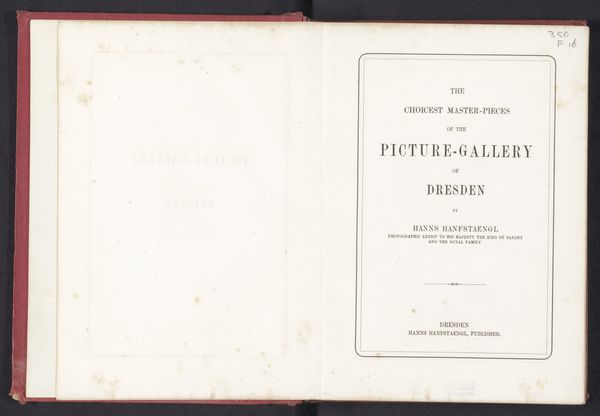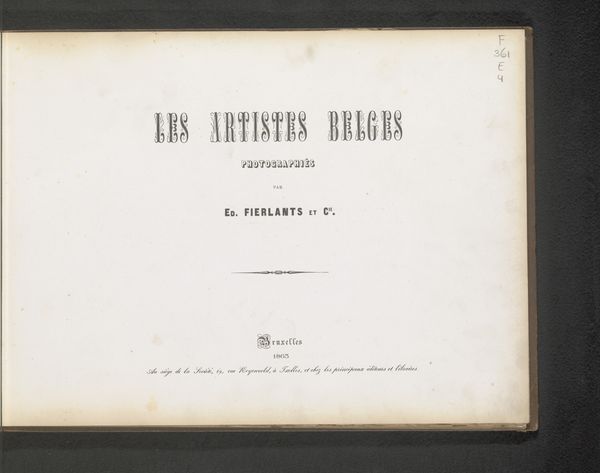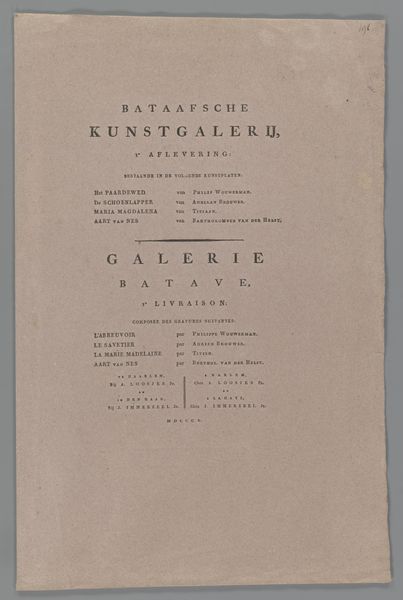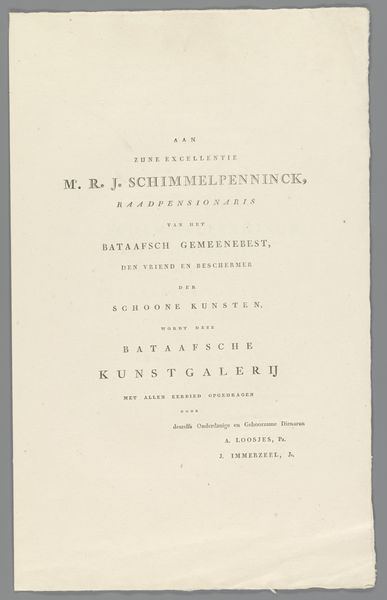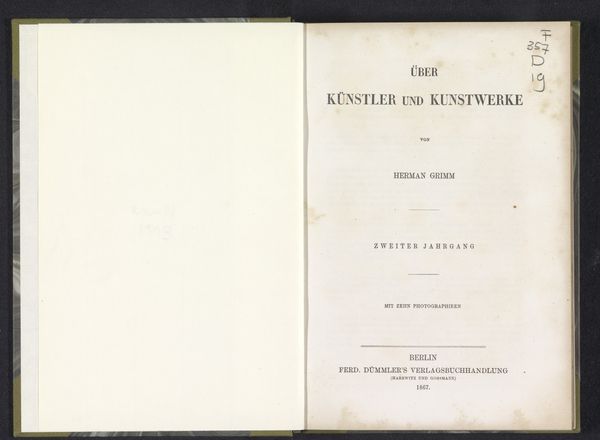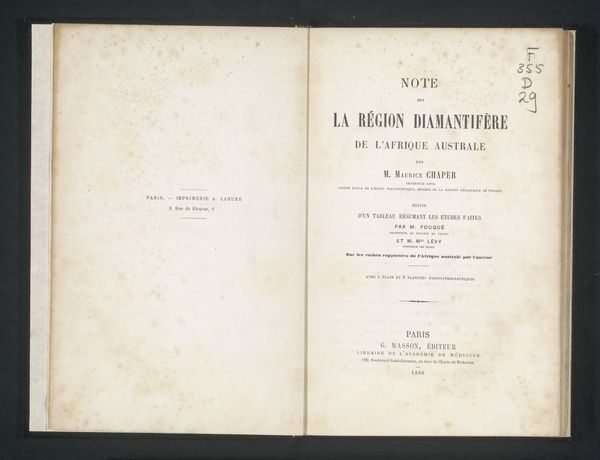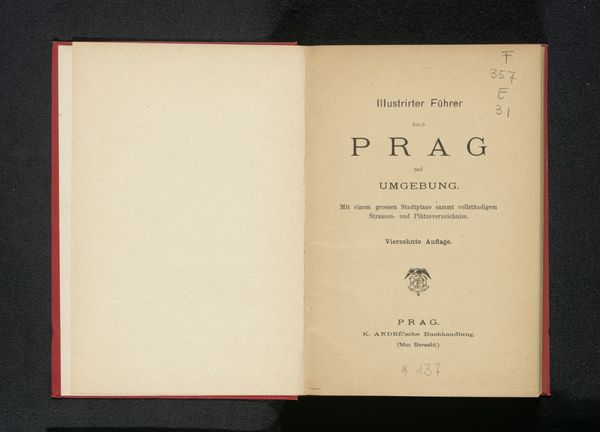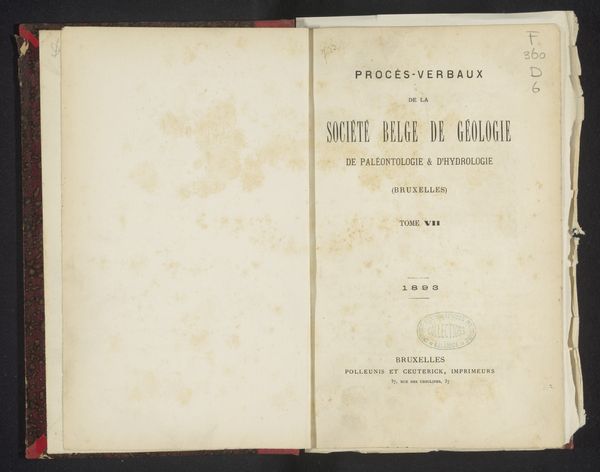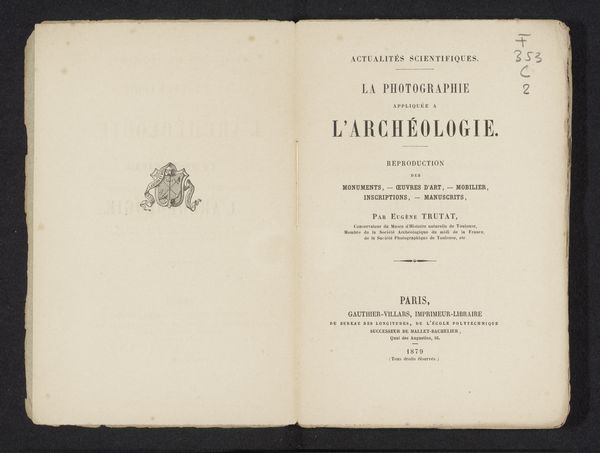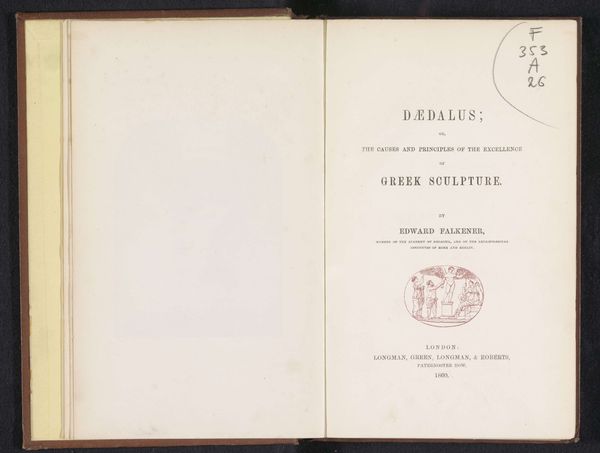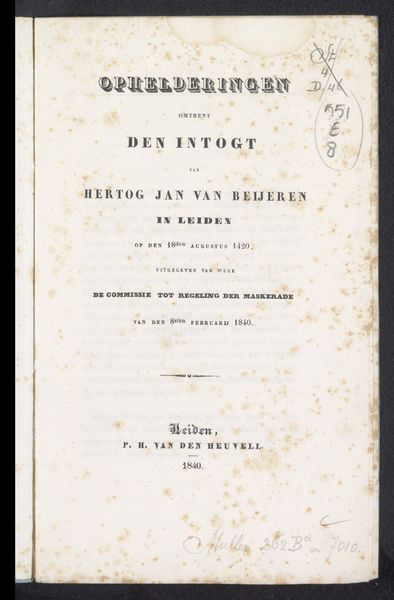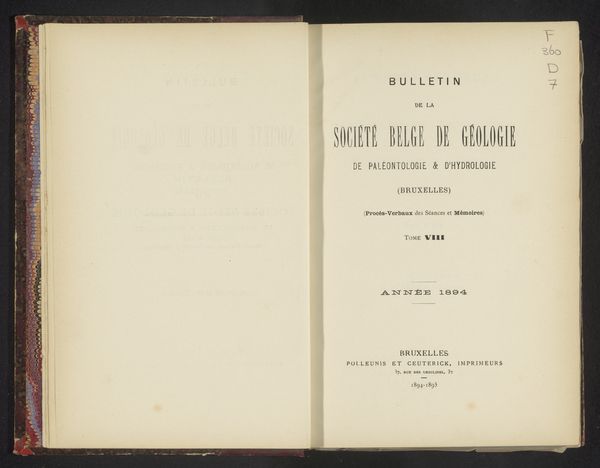
drawing, print, paper, typography
#
portrait
#
drawing
#
aged paper
# print
#
book
#
paper
#
typography
#
romanticism
Dimensions: Sheet: 8 5/16 × 5 1/2 in. (21.1 × 14 cm)
Copyright: Public Domain
Editor: This is the title page from "The Complete Works of P.J. de Béranger," an illustrated edition from 1836. It's a typographic print on aged paper, and it gives off this distinct, almost fragile feel because of its texture and the simple layout. What stands out to you as you look at it? Curator: Immediately, I consider Béranger himself. He was a hugely popular songwriter, a voice for the common person during a period of political upheaval in France. The accessibility of his poems and songs, now collected and illustrated, speaks volumes about the burgeoning print culture and its intersection with political consciousness. What do we know about the illustrator J.J. Grandville's own political leanings and how he might've enhanced or challenged Béranger’s original messages? Editor: I hadn't even considered Grandville's perspective! I guess I just saw it as a straightforward publishing project. Curator: Exactly. We often think of artists as lone geniuses, but this book represents a collaboration shaped by societal forces. Were these illustrations geared toward widening the readership of Béranger, and what visual strategies did Grandville employ to represent the nuances of social critique present in the texts? Consider, too, the intended audience: who could afford such a volume? Editor: That's a good point; a published, illustrated volume suggests a degree of wealth and literacy, maybe conflicting with Béranger's championing of the common person. The placement of the publisher’s name, "H. Fournier ainé," also tells us about the economic drivers behind cultural production at the time. Curator: Absolutely! The book itself becomes an artifact representing those tensions. We see Romantic ideals colliding with the realities of a changing socio-economic landscape. It serves as a lens through which to examine class, the commodification of art, and the complicated role of the artist in reflecting and shaping public opinion. Editor: Looking at it this way really makes me see the artwork—even a title page—as more than just an introduction, but as an invitation to dig into social issues and historical complexities!
Comments
No comments
Be the first to comment and join the conversation on the ultimate creative platform.
